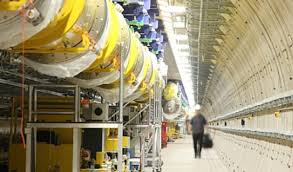Researchers can track the movements of the nucleus in an aX-Ray Lasers Can Detect Indefinable Electron Motiontom comparatively with no trouble, but electrons have established to be elusive. They jump so quickly that they aim to be fragmented to blurs. Now, on the other hand, those movements can be translucent. Scientists at the SLAC National Accelerator Lab have designed a method, XLEAP (X-ray laser-enhanced attosecond pulse generation), that can scrutinize even the quickest electron motions. At only 280 attoseconds, or billionths of a billionth of a second, the laser pulses can make electron snapshots to track their development. The trick was to alter the laser in a manner that clutched electrons into tighter groups, making for smaller X-ray bursts.
X-ray lasers such as Linac Coherent Light Source by SLAC have a magnet, or an undulator, that converts some of the power from beams of electron into bursts of X-ray. The group included two magnets before the undulator to shape the groups of electron into very intense, narrow spikes (some almost 500 megawatts) with a broad diversity of energies. From here, they can get attosecond-based flashes of X-ray.
It was another job to calculate the X-rays. That needed making a device that sent the X-rays via gas and shredded them of some of their electrons to make a cloud of electron. An infrared laser offers a “push” to those electrons, resulting in different speeds of movement that assist researchers to measure an X-ray pulse’s length.
This technique could result in breakthroughs in virtually any scientific area that examines atoms. Chemists, biologists, and material researchers can more precisely research processes that begin at the electron stage, for example, photosynthesis. And the tech might get better. SLAC hopes both modifications and the next-generation LCLS-II laser (that emits pulses of X-ray 8,000 times quicker) to permit for potentially shorter and more intense pulses.

